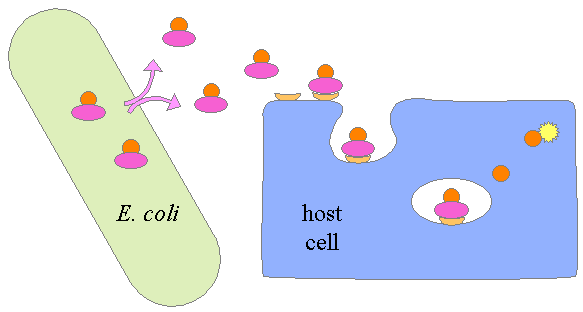
The Shiga-like toxins, like many other toxins, belong to the very general class of AB toxins. Other members of this class include cholera toxin, diphtheria toxin, and pertussis toxin (associated with whooping cough).
They are called AB toxins because they are constructed from two parts (A and B) that play different roles in toxin action. The B component (pink in the picture below) binds to molecules on the surface of target cells (light orange). The toxins are then taken up into the target cells by endocytosis, at which point the A component (dark orange) enters the cytoplasm and (depending on the particular toxin) carries out some toxic enzymatic reaction inside the cell. There is thus a structural division between the cell-surface recognition function (B-subunit) and toxic enzymatic action.
In the case of the Shiga-like toxins, the A component attacks the ribosome by clipping a particular nucleotide from one of the ribosomal RNAs. This blocks protein synthesis and leads to the death of the cell. The rest of this discussion will center on the action of the B component, which binds to certain glycolipids on the surface of the target cell.

|
Back E. coli food poisoning |
Up Back to top |
Next Structure of SLT-I B-pentamer |